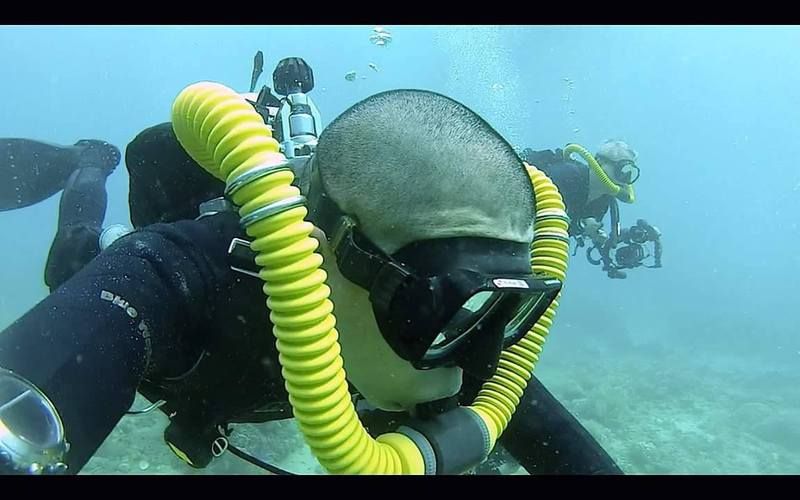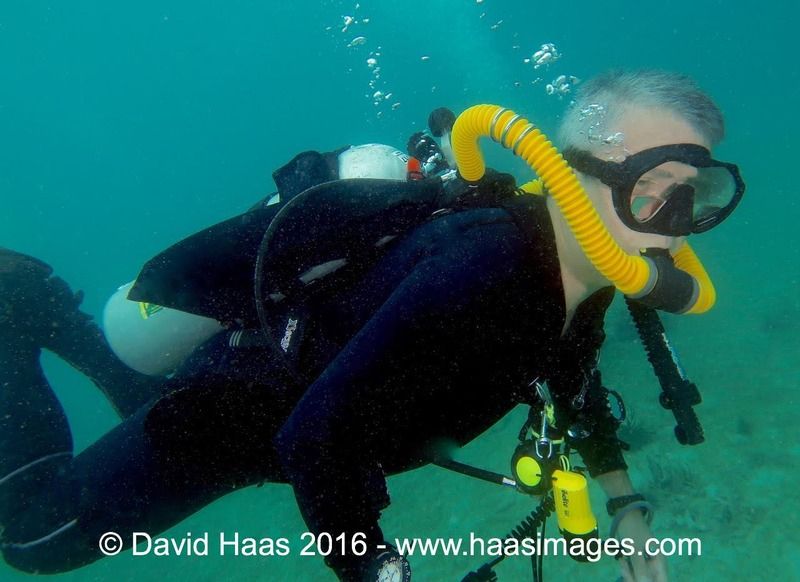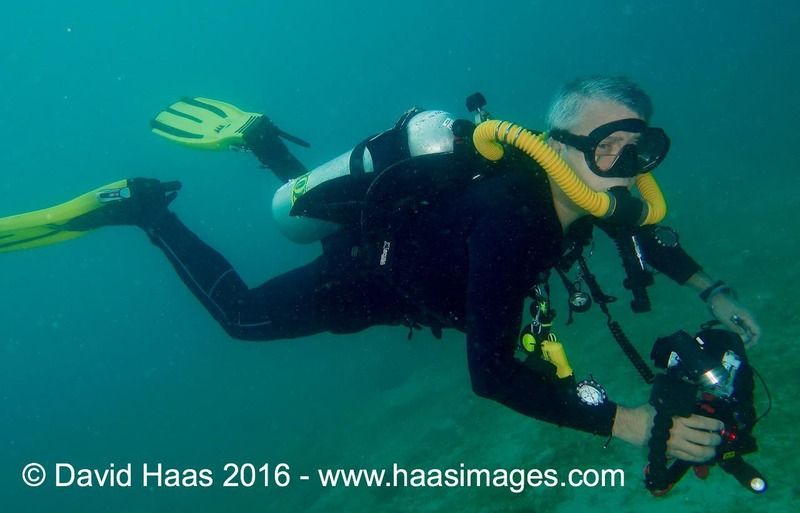You are using an out of date browser. It may not display this or other websites correctly.
You should upgrade or use an alternative browser.
You should upgrade or use an alternative browser.
Project Argonaut, totally new, vintage style DH regulator
- Thread starter Luis H
- Start date
Please register or login
Welcome to ScubaBoard, the world's largest scuba diving community. Registration is not required to read the forums, but we encourage you to join. Joining has its benefits and enables you to participate in the discussions.
Benefits of registering include
- Ability to post and comment on topics and discussions.
- A Free photo gallery to share your dive photos with the world.
- You can make this box go away
We got back from the Philippines last Sunday. I did 46 dives in 11 days. The diving was fantastic.
Mouthpiece comfort:
During all 46 dives I used the same Argonaut with the newest sample of the DSV mouthpiece and worked great! After one simple hose rotation adjustment the comfort level was superior to any previous DH mouthpiece I have ever used. I am used my favorite MP bite, but the balanced was also outstanding (after the minor adjustment). The mouth piece byte selection is now a personal choice with this new DSV.
With this number of consecutive dives using a vintage style mouthpiece I would always get a minor sore inside my lower lip. I didn’t feel even the slightest indication of any type sore.
Flow performance:
The flow diverter is also exceeding my expectations. With the flow diverter in place I can get the full advantage of the maximum venturi flow. As originally designed and intended, I can increase the venturi flow by blocking the side bleed air port in the second stage HPR body. This increases the venturi and the diverter flow takes full advantage of this flow by directing the air into the divers mouth.
Note: If the regulator is adjusted for maximum venturi flow, the DSV with the flow diverter is required or an excessive amount of air will go out the exhaust during normal inhalation.
Properly adjusted, the Argonaut has better venturi flow than all previous DH regulators (including a Phoenix with the HPR), but the only way to take full advantage of it's maximum performance is with the DSV mouth piece and the flow diverter.
Closing feature:
The sealing and friction O-rings provided the perfect amount of friction to hold the mouthpiece in place, but it allowed a single hand opening or closing ability while the mouth piece is in the divers mouth. It is easy to hole the mouth piece in your mouth and rotate the closing valve with one hand.
The seals are perfectly air and water tight. After 46 consecutive dives, there was not a single drop of water in the intake hose or inside the regulator cans.
With the mouthpiece closed, the diver can purge the small amount of water in the byte tube. There is a small channel and purge hole that seals when the mouthpiece is opened.
DSV convenience:
In the Philippines we were doing most of the dives from small boats. The preference was to remove our dive kits in the water and the dive crew would lift it out of the water. Having a DSV made it very elegant for me to remove the mouthpiece out of my mouth at any time without any free-flow. It became totally second nature to close the DSV every time before I removed the MP out of my mouth.
I could lay on my back and talk to anyone or I could take of my kit, inflate my wing and relax while laying on top of my dive kit while waiting for the rest of the divers to get on the boat.
Take a look at the pictures below.
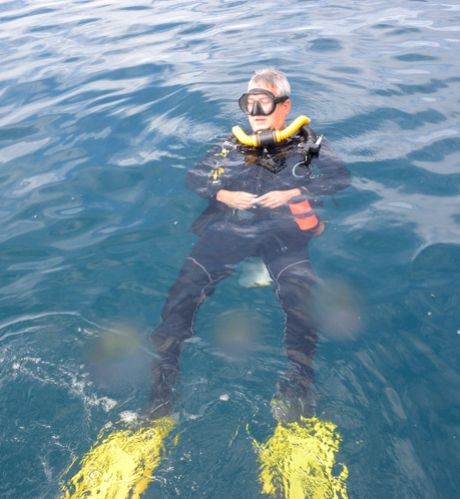
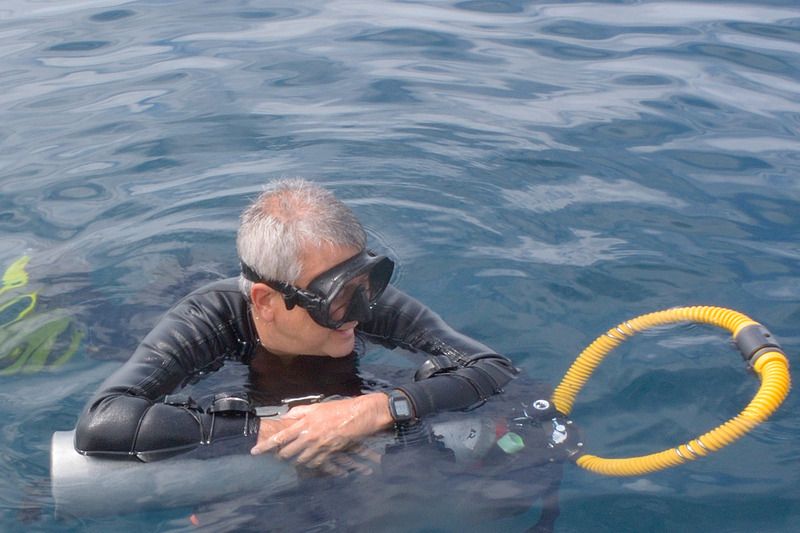
Mouthpiece comfort:
During all 46 dives I used the same Argonaut with the newest sample of the DSV mouthpiece and worked great! After one simple hose rotation adjustment the comfort level was superior to any previous DH mouthpiece I have ever used. I am used my favorite MP bite, but the balanced was also outstanding (after the minor adjustment). The mouth piece byte selection is now a personal choice with this new DSV.
With this number of consecutive dives using a vintage style mouthpiece I would always get a minor sore inside my lower lip. I didn’t feel even the slightest indication of any type sore.
Flow performance:
The flow diverter is also exceeding my expectations. With the flow diverter in place I can get the full advantage of the maximum venturi flow. As originally designed and intended, I can increase the venturi flow by blocking the side bleed air port in the second stage HPR body. This increases the venturi and the diverter flow takes full advantage of this flow by directing the air into the divers mouth.
Note: If the regulator is adjusted for maximum venturi flow, the DSV with the flow diverter is required or an excessive amount of air will go out the exhaust during normal inhalation.
Properly adjusted, the Argonaut has better venturi flow than all previous DH regulators (including a Phoenix with the HPR), but the only way to take full advantage of it's maximum performance is with the DSV mouth piece and the flow diverter.
Closing feature:
The sealing and friction O-rings provided the perfect amount of friction to hold the mouthpiece in place, but it allowed a single hand opening or closing ability while the mouth piece is in the divers mouth. It is easy to hole the mouth piece in your mouth and rotate the closing valve with one hand.
The seals are perfectly air and water tight. After 46 consecutive dives, there was not a single drop of water in the intake hose or inside the regulator cans.
With the mouthpiece closed, the diver can purge the small amount of water in the byte tube. There is a small channel and purge hole that seals when the mouthpiece is opened.
DSV convenience:
In the Philippines we were doing most of the dives from small boats. The preference was to remove our dive kits in the water and the dive crew would lift it out of the water. Having a DSV made it very elegant for me to remove the mouthpiece out of my mouth at any time without any free-flow. It became totally second nature to close the DSV every time before I removed the MP out of my mouth.
I could lay on my back and talk to anyone or I could take of my kit, inflate my wing and relax while laying on top of my dive kit while waiting for the rest of the divers to get on the boat.
Take a look at the pictures below.


Luis,
That looks and sounds fantastic.
In the picture above, with Dr. Ed in the foreground and you in the background, I like the way the hoses on your rig are laying. It looks like 3 rings per hose placed midway between the can and mouthpiece. Is that about correct?
Thanks,
Couv
That looks and sounds fantastic.
In the picture above, with Dr. Ed in the foreground and you in the background, I like the way the hoses on your rig are laying. It looks like 3 rings per hose placed midway between the can and mouthpiece. Is that about correct?
Thanks,
Couv
It was interesting that the subject of regulator position was discussed under the thread at VDH of the new Argonaut DSV.
Vintage Double Hose • View topic - New DSV Mouthpiece Coming soon!
Well with the new flow diverter I can now adjust the venturi flow very high, which in turns makes regulator positioning a bit less critical. I still have to initiate the flow, but the venturi clearly takes over and delivers air flow while I am inhaling. The diverter directs the flow towards the divers mouth and doesn’t allow any wasted air to bypass and go out the exhaust.
With a very strong venturi, a vintage style mouthpiece would allow air to just flow out the exhaust. Also the vintage metal can with the rectangular horn base does not develop as strong of a venturi flow as it can be adjusted with the Argonaut can design.
I sent Dr Ed several pictures I took of him when he was trying my spare Argonaut with the new DSV. He immediately noticed that he could improve his regulator position and he email me back (we have been emailing back and forth). Ed is a very smooth diver and this will be a very small adjustment for him.
Well, even with this position handicap, he was so impressed with the performance that he ordered a new Argonaut the next day.
Position is always important with a DH regulator, but we have taken one significant step to make it a bit less critical, with a properly adjusted Argonaut in combination with the new DSV (Dive-surface Valve) and flow diverter.
Here are a couple more pictures of Ed.
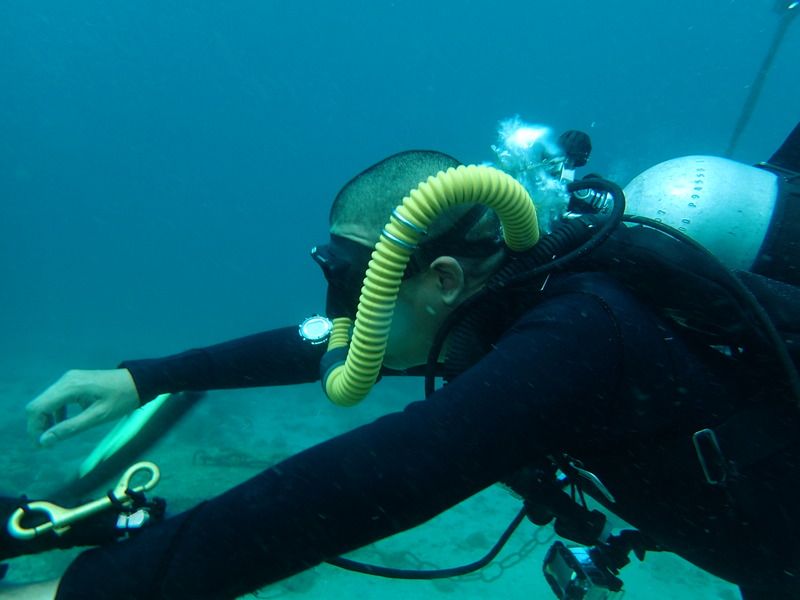
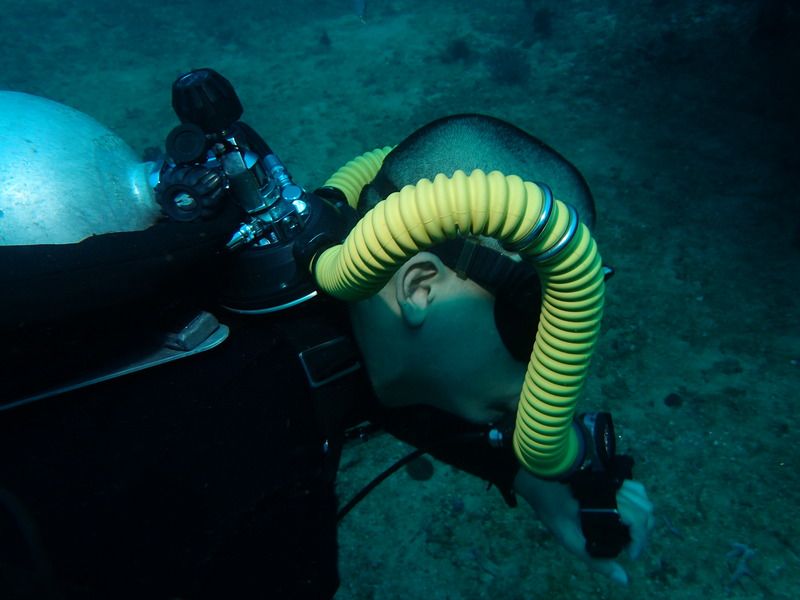
I spent a lot of time experimenting with my new camera, head down. Trying some macro photography. And with all the different positions I got in, I actually never notice any performance difference when I was head down. Perhaps I was at times distracted, but I tend to pay attention to regulator performance.
Note: these pictures have not been cropped or processed in any form. Some of the subjects are about a 1/4 in size (or less). I had to get real close, head down to take some of this shots. I have to say that I am also very please with my new little point-and-shoot camera. I will post more on this on a separate thread. I don’t want to derail this thread.
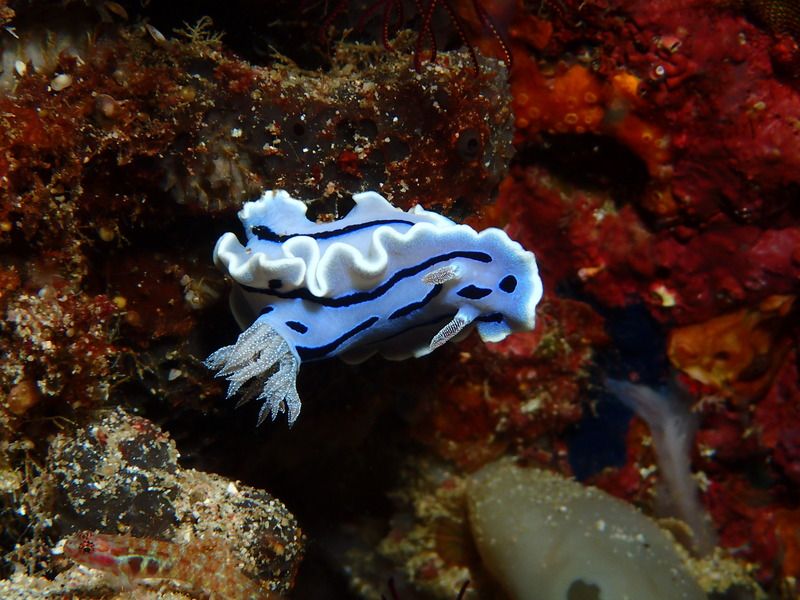
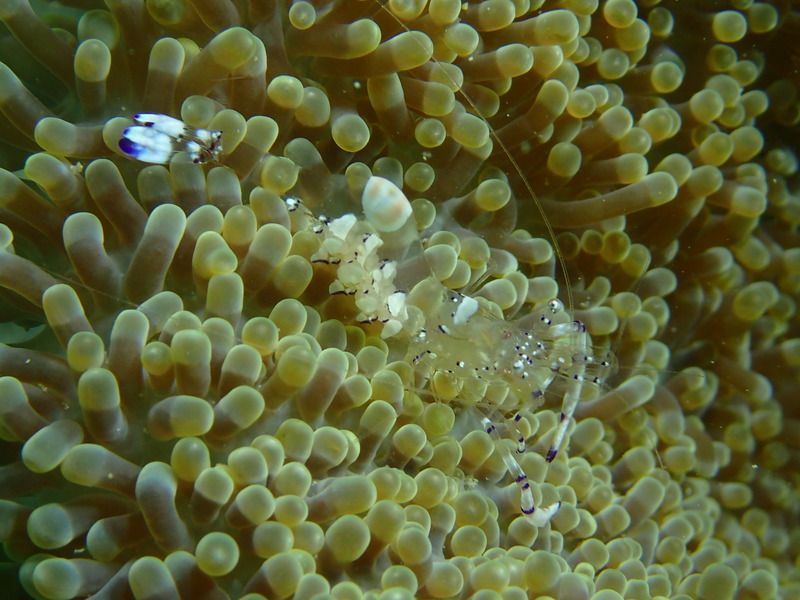
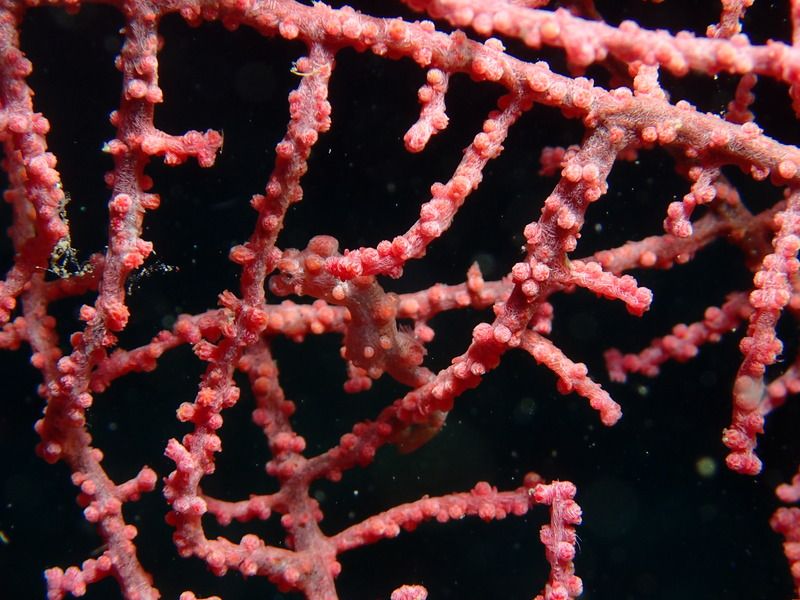
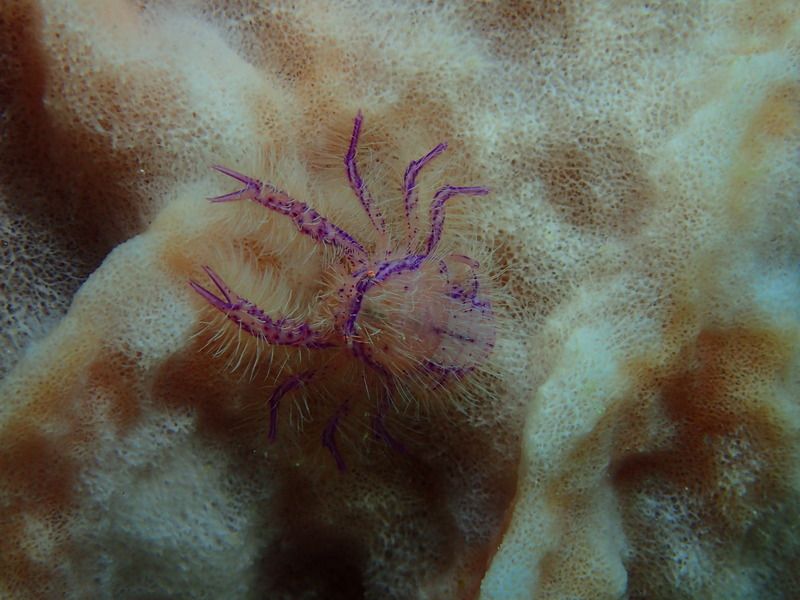
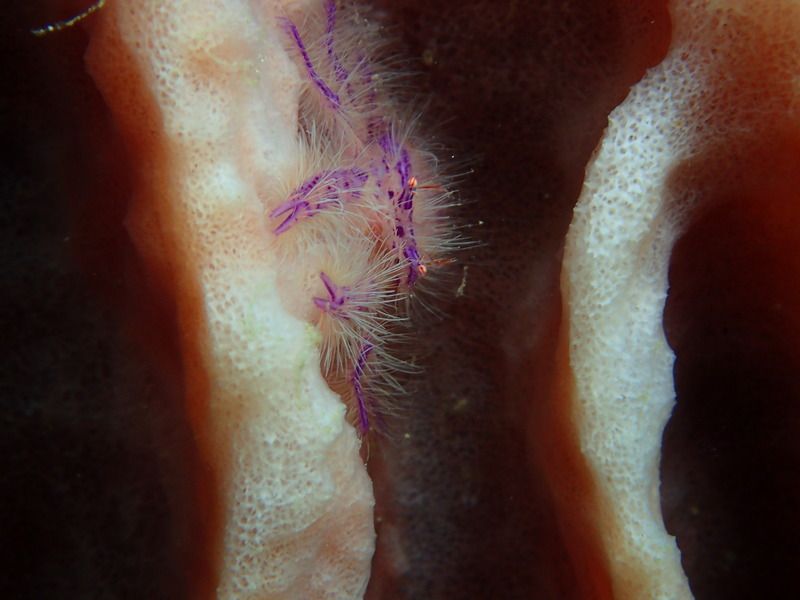
Back to the Argonaut DSV and flow diverter details.
Here are some pictures of the new DSV with the flow diverter. The white flow diverter was just a prototype, but I it is dimensionally OK so I thought it would help to show it in pictures.
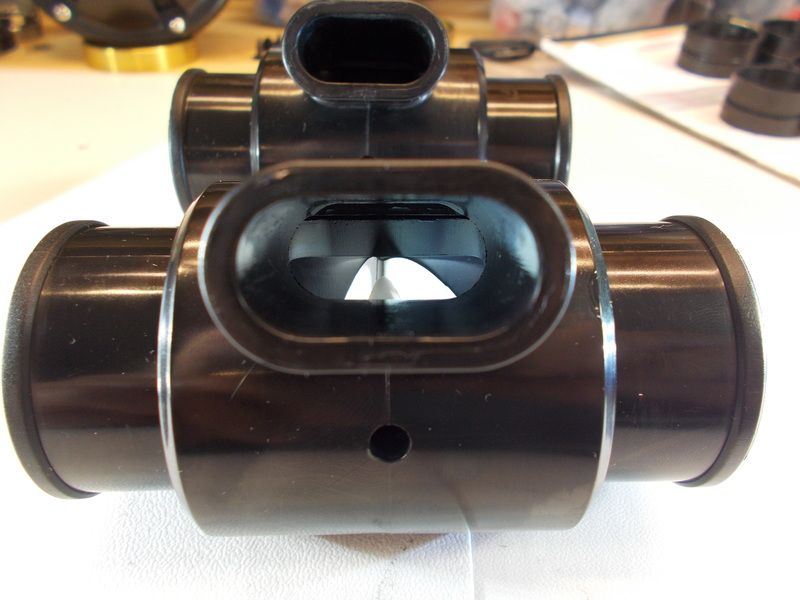
Notice in this picture that the flow opening in the inside tube is much larger than the mouthpiece opening. I did a very careful section by section analysis and model to make sure there was no flow restriction and that the transition flow direction change is actually more gentle than without the diverter.
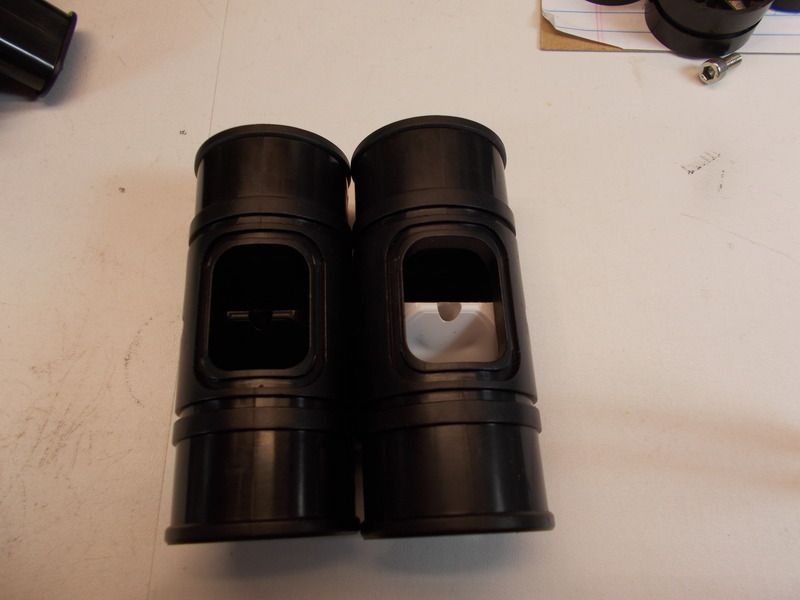
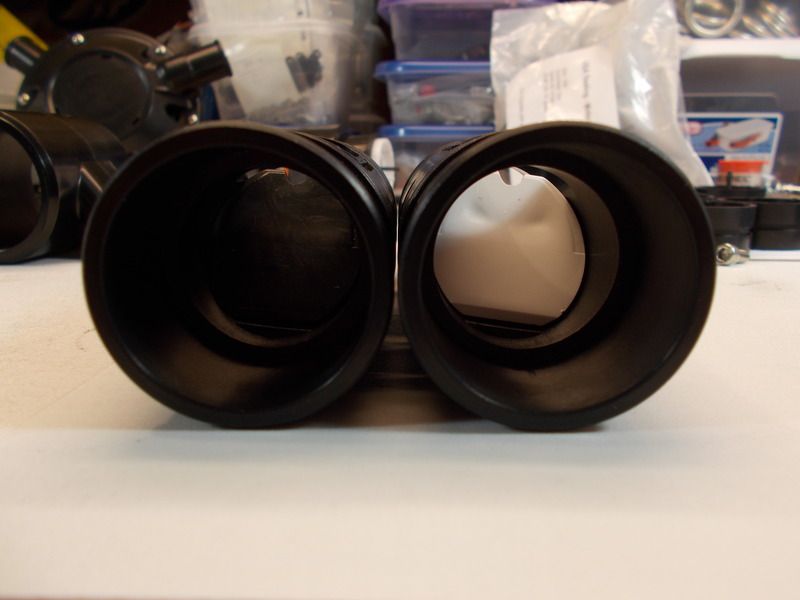
The “V” looking mark is actually an arrow head to indicate the flow direction. This is the exhaust side. You only need to know this if you take it apart. Everything else is symmetrical, but the diverter has an inlet side and an exhaust side.

This picture shows a Viton (brown) O-ring with a partially closed DSV. This is only a transition view. The DSV should be fully open or fully closed during operation.
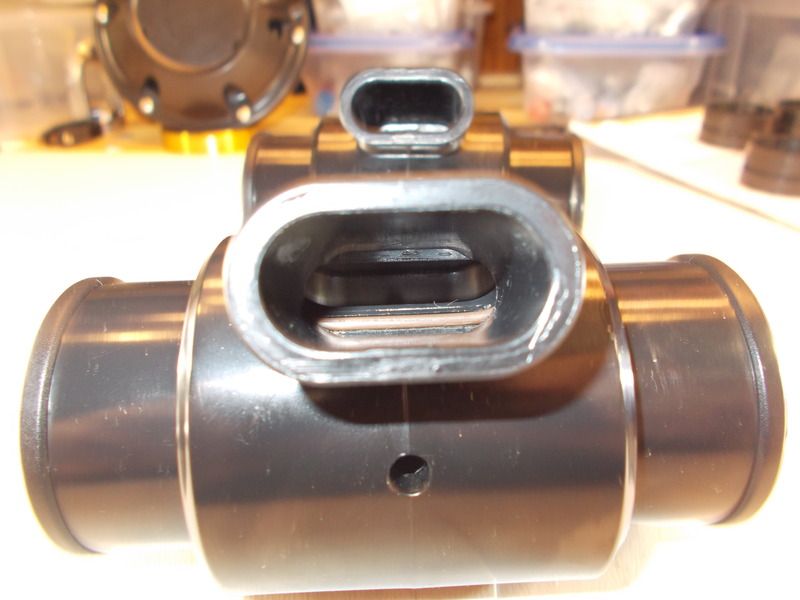
In this picture you can see the black flow diverter in place, but I had to illuminate it in order to see it. When installed with the mouthpiece valves and hoses, it would be too dark to see it without shining a light into the mouthpiece.
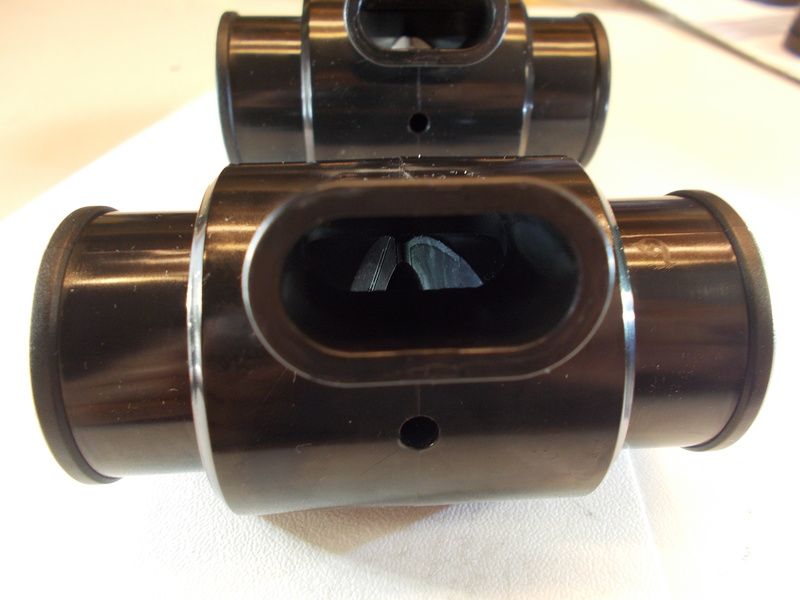
You may notice that the mouthpiece opening is one of the largest in the industry. Of the typical standard regulator mouthpiece, it uses the larger one typically available. This was again optimized to reduced flow resistance.
Vintage Double Hose • View topic - New DSV Mouthpiece Coming soon!
Well with the new flow diverter I can now adjust the venturi flow very high, which in turns makes regulator positioning a bit less critical. I still have to initiate the flow, but the venturi clearly takes over and delivers air flow while I am inhaling. The diverter directs the flow towards the divers mouth and doesn’t allow any wasted air to bypass and go out the exhaust.
With a very strong venturi, a vintage style mouthpiece would allow air to just flow out the exhaust. Also the vintage metal can with the rectangular horn base does not develop as strong of a venturi flow as it can be adjusted with the Argonaut can design.
I sent Dr Ed several pictures I took of him when he was trying my spare Argonaut with the new DSV. He immediately noticed that he could improve his regulator position and he email me back (we have been emailing back and forth). Ed is a very smooth diver and this will be a very small adjustment for him.
Well, even with this position handicap, he was so impressed with the performance that he ordered a new Argonaut the next day.
Position is always important with a DH regulator, but we have taken one significant step to make it a bit less critical, with a properly adjusted Argonaut in combination with the new DSV (Dive-surface Valve) and flow diverter.
Here are a couple more pictures of Ed.


I spent a lot of time experimenting with my new camera, head down. Trying some macro photography. And with all the different positions I got in, I actually never notice any performance difference when I was head down. Perhaps I was at times distracted, but I tend to pay attention to regulator performance.
Note: these pictures have not been cropped or processed in any form. Some of the subjects are about a 1/4 in size (or less). I had to get real close, head down to take some of this shots. I have to say that I am also very please with my new little point-and-shoot camera. I will post more on this on a separate thread. I don’t want to derail this thread.





Back to the Argonaut DSV and flow diverter details.
Here are some pictures of the new DSV with the flow diverter. The white flow diverter was just a prototype, but I it is dimensionally OK so I thought it would help to show it in pictures.

Notice in this picture that the flow opening in the inside tube is much larger than the mouthpiece opening. I did a very careful section by section analysis and model to make sure there was no flow restriction and that the transition flow direction change is actually more gentle than without the diverter.


The “V” looking mark is actually an arrow head to indicate the flow direction. This is the exhaust side. You only need to know this if you take it apart. Everything else is symmetrical, but the diverter has an inlet side and an exhaust side.

This picture shows a Viton (brown) O-ring with a partially closed DSV. This is only a transition view. The DSV should be fully open or fully closed during operation.

In this picture you can see the black flow diverter in place, but I had to illuminate it in order to see it. When installed with the mouthpiece valves and hoses, it would be too dark to see it without shining a light into the mouthpiece.

You may notice that the mouthpiece opening is one of the largest in the industry. Of the typical standard regulator mouthpiece, it uses the larger one typically available. This was again optimized to reduced flow resistance.
Last edited:
Ed Palma
Contributor
Trying out the DSV on Luis' reg was a treat. The operation of the barrel is very smooth, with just the right amount of tension to avoid inadvertent closure. I really liked the little features such as being able to clear the barrel before opening it up, as well as the nifty trick of drying out your hoses back on the boat by starting a free flow, then closing off the mouthpiece to blow the hoses free of any water. I just need to develop the habit of actuating the DSV (especially when putting it in the rinse tank) to keep the hoses nice and dry.
Although regulator position is DH 101, I've always been guilty of wearing it just a tad bit high. From my first DH dives in 2011 up until now, I have a tendency to position it in such a way that my head can touch the cans. My rationale was that in a purely horizontal position, the difference between the distance of the main diaphragm and my lungs would be the same. However - as can be seen in the photos above - I'm not completely horizontal. That said, I used my PRAM for 2 dives with Luis, then did 2 with his extra Argonaut - while keeping everything else similar (cans ended up same as how I usually wear them), and was able to notice a difference.
I was... amazed!
Let me clarify: I will admit to being a latecomer to the Argonaut Kraken party. For all previous updates from the time the vintage bug bit me with a VDH explorer kit in 2011, I was there. Phoenix nozzle? Check. Silicone hoses and diaphragm? Sign me up. DBE? Yup. Backplate? Yezzir. HPR and updated diaphragm. Gimme those as well. DSV? Yes please. With each update, my old PRAM got closer and closer to being the ultimate rig, that I honestly wasn't expecting the difference to be as palpable as it was to me. In fact, the expression used was "approaching diminishing returns." With this assessment, I hemmed and hawed on getting my own Kraken.
Then Luis comes along with his extra reg. After each dive back on the boat, Luis and I would end up talking mostly about the reg (and occasionally about the dive...
 ). And most of the time, all I could think of was "Wow!." Those little tricks you could do - such as diving on your side to get the cans level with your lungs? Didn't need to do that. Using an Argonaut was truly effortless breathing. After trying one out and feeling the difference, I just knew I had to have one.
). And most of the time, all I could think of was "Wow!." Those little tricks you could do - such as diving on your side to get the cans level with your lungs? Didn't need to do that. Using an Argonaut was truly effortless breathing. After trying one out and feeling the difference, I just knew I had to have one.
Although regulator position is DH 101, I've always been guilty of wearing it just a tad bit high. From my first DH dives in 2011 up until now, I have a tendency to position it in such a way that my head can touch the cans. My rationale was that in a purely horizontal position, the difference between the distance of the main diaphragm and my lungs would be the same. However - as can be seen in the photos above - I'm not completely horizontal. That said, I used my PRAM for 2 dives with Luis, then did 2 with his extra Argonaut - while keeping everything else similar (cans ended up same as how I usually wear them), and was able to notice a difference.
I was... amazed!
Let me clarify: I will admit to being a latecomer to the Argonaut Kraken party. For all previous updates from the time the vintage bug bit me with a VDH explorer kit in 2011, I was there. Phoenix nozzle? Check. Silicone hoses and diaphragm? Sign me up. DBE? Yup. Backplate? Yezzir. HPR and updated diaphragm. Gimme those as well. DSV? Yes please. With each update, my old PRAM got closer and closer to being the ultimate rig, that I honestly wasn't expecting the difference to be as palpable as it was to me. In fact, the expression used was "approaching diminishing returns." With this assessment, I hemmed and hawed on getting my own Kraken.
Then Luis comes along with his extra reg. After each dive back on the boat, Luis and I would end up talking mostly about the reg (and occasionally about the dive...
Hi Ed,
I am so glad you were able to join us for a few dives. After email back and forth for several years, it was great to actually meet you and your family.
I can’t wait to go back to the Philippines in a couple of years… hopefully we can do a lot more diving then. Your Argonaut should have some mileage by then.
I am so glad you were able to join us for a few dives. After email back and forth for several years, it was great to actually meet you and your family.
I can’t wait to go back to the Philippines in a couple of years… hopefully we can do a lot more diving then. Your Argonaut should have some mileage by then.
Ed Palma
Contributor
It was great diving with you guys, and putting faces to names! Wish I could've chatted more with Allan as well, but at least I was able to snap this photo of the 2 of you! It was worth heading back down from our safety stop  I remember Thax' (our DM) initial reaction when I took out my PRAM to setup on the plate: "Oh, you're one of them!".
I remember Thax' (our DM) initial reaction when I took out my PRAM to setup on the plate: "Oh, you're one of them!".
It was great seeing DHs in the water from a 3rd party perspective - since I'm usually just the one using one around here. I know there's another DH diver here in the Philippines from the south in Davao (Paul), but we have yet to meet.
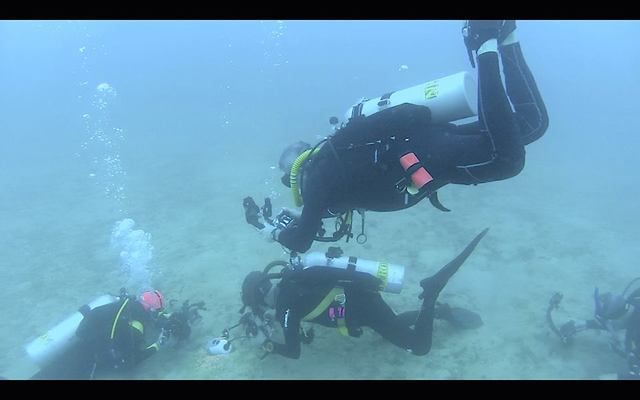
It was great seeing DHs in the water from a 3rd party perspective - since I'm usually just the one using one around here. I know there's another DH diver here in the Philippines from the south in Davao (Paul), but we have yet to meet.

Here is another picture while I was using the new Argonaut DSV in the Philippines.
It is always nice to be able to get close to marine life without having bubbles near my face.
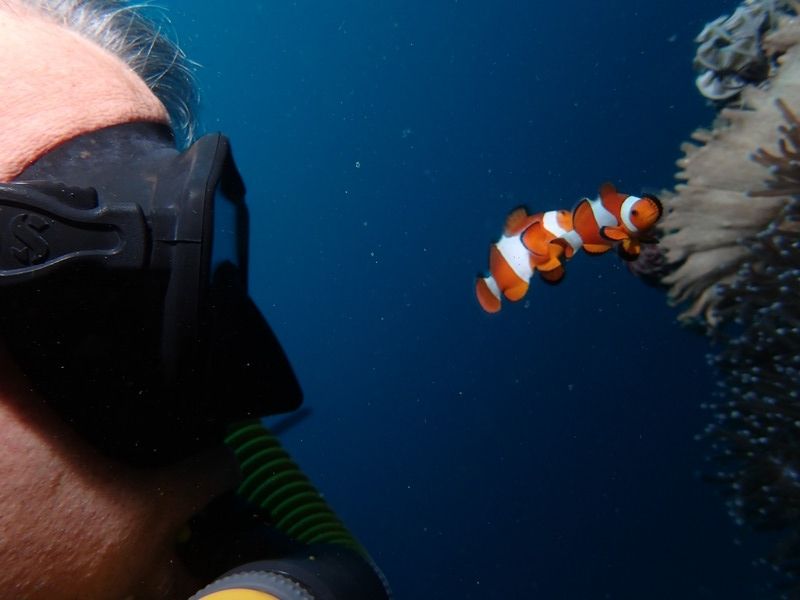
I don’t believe these little fish understand the concept of fear (similar to our Damsel fish in the Caribbean), but not having the bubbles and their noise near my face always helps.
Note: my left hose is not green. They are both yellow.
Notice that I like to wear a very low profile frameless mask. My field of vision with this newer style mask is extraordinary. The lens is as close to my eyes as a normal pair of glasses and my peripheral vision side-to-side and up-and-down is the best.
I took the field of view into consideration when designing the DSV mouthpiece. I did not want the mouthpiece tube to block my field of vision and as you can see it doesn’t.
I can look down at my chest and I can look at my sternum strap if I need to adjust it. This new DSV mouthpiece tube is never in the way of my field of view.
It is always nice to be able to get close to marine life without having bubbles near my face.

I don’t believe these little fish understand the concept of fear (similar to our Damsel fish in the Caribbean), but not having the bubbles and their noise near my face always helps.
Note: my left hose is not green. They are both yellow.
Notice that I like to wear a very low profile frameless mask. My field of vision with this newer style mask is extraordinary. The lens is as close to my eyes as a normal pair of glasses and my peripheral vision side-to-side and up-and-down is the best.
I took the field of view into consideration when designing the DSV mouthpiece. I did not want the mouthpiece tube to block my field of vision and as you can see it doesn’t.
I can look down at my chest and I can look at my sternum strap if I need to adjust it. This new DSV mouthpiece tube is never in the way of my field of view.
The new Argonaut mouthpiece are in and from what I hear, they are flying of the shelf. A lot of divers have received theirs already and the feedback has been great.


The Argonaut DSV comes with a kit for service in the future.

John W here in Maine with his new Argonaut DSV. You got love the poor visibility up here.



The Argonaut DSV comes with a kit for service in the future.
John W here in Maine with his new Argonaut DSV. You got love the poor visibility up here.

Last edited:
Similar threads
- Replies
- 0
- Views
- 576
- Replies
- 13
- Views
- 1,581
- Replies
- 0
- Views
- 300
- Replies
- 3
- Views
- 680



